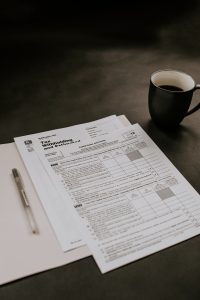US 30 Forex is a popular trading instrument that allows traders to speculate on the performance of the Dow Jones Industrial Average (DJIA). The DJIA is one of the world’s most widely followed stock market indices and is used as a benchmark for the performance of the U.S. stock market. The US 30 Forex, also known as the Dow Jones index, is traded on the forex market, and traders can take advantage of the fluctuations in the price of the index to make profits.
What is the DJIA?
The DJIA is a stock market index that tracks the performance of 30 large publicly traded companies in the United States. The index is calculated by taking the sum of the prices of the 30 constituent stocks and dividing it by a divisor, which is adjusted to account for stock splits, dividends, and other corporate actions. The DJIA is a price-weighted index, which means that higher-priced stocks have a greater impact on the index’s value than lower-priced stocks.
The DJIA was created in 1896 by Charles Dow, the founder of the Wall Street Journal, and has since become one of the most widely followed stock market indices in the world. The index includes companies from a variety of industries, including technology, healthcare, finance, and retail.
What is US 30 Forex?
US 30 Forex is a forex trading instrument that allows traders to speculate on the performance of the DJIA. The instrument is traded on the forex market, which is the world’s largest financial market, with an average daily trading volume of over $5 trillion. Forex trading allows traders to buy and sell currencies, commodities, and other financial instruments.
Traders can use the US 30 Forex to take advantage of the fluctuations in the price of the DJIA. If a trader believes that the index will go up, they can buy the US 30 Forex, and if they believe that the index will go down, they can sell the US 30 Forex. The profit or loss that a trader makes is determined by the difference between the price at which they bought or sold the US 30 Forex and the price at which they closed their position.
Why trade US 30 Forex?
There are several reasons why traders might choose to trade US 30 Forex:
1. Diversification: Trading US 30 Forex allows traders to diversify their portfolio by adding exposure to the U.S. stock market.
2. Liquidity: The forex market is highly liquid, meaning that traders can enter and exit positions quickly and easily.
3. Volatility: The DJIA is known for its volatility, which means that traders can potentially profit from large movements in the index.
4. Leverage: Forex trading allows traders to use leverage, which means that they can control a larger position with a smaller amount of capital. This can increase potential profits, but it also increases the risk of losses.
5. Accessibility: Forex trading is accessible to traders of all levels, and there are many online brokers that offer US 30 Forex trading.
Risks of trading US 30 Forex
Trading US 30 Forex comes with risks, and traders should be aware of these risks before entering the market. Some of the main risks include:
1. Volatility: The DJIA is known for its volatility, and traders should be prepared for large movements in the index.
2. Leverage: Using leverage can increase potential profits, but it also increases the risk of losses. Traders should use leverage carefully and only with a solid risk management strategy.
3. Market Risk: The forex market is subject to various market risks, including geopolitical events, economic data releases, and central bank announcements.
4. Liquidity Risk: While the forex market is highly liquid, there may be times when liquidity is lower, which can increase the risk of slippage or difficulty in entering or exiting positions.
Conclusion
US 30 Forex is a popular trading instrument that allows traders to speculate on the performance of the DJIA. Trading US 30 Forex can offer diversification, liquidity, volatility, leverage, and accessibility to traders of all levels. However, trading US 30 Forex also comes with risks, including volatility, leverage, market risk, and liquidity risk. Traders should always use a solid risk management strategy and be aware of the risks involved before entering the market.






